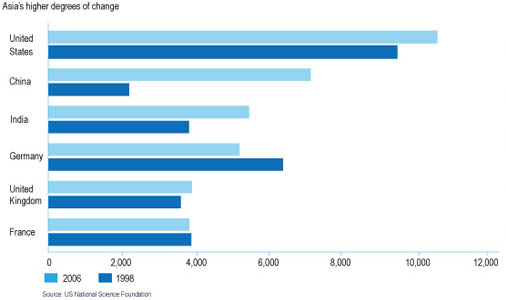Life Sciences companies are experiencing a period of unprecedented change. Driven by shifts in age and demographics, disease, the entry of new technologies, increased government regulations, and the pace of health care inflation, life sciences companies will have to dramatically change in order to cope with the future industry environment.
The industry is now about 30 years old but it hasn’t completely fulfilled its promise. Drugs aren't being developed notably faster, cheaper, or with less risk. The Biotech business model relied on lots of seed money from financial investors, but this is getting harder to come by as the research base moves east and emerging economies fight for their share.
As the boundaries between biotech and pharma are blurring, they are effectively becoming one industry - the biopharmaceutical industry, although there's a limit to how far Pharma can go down the Biotech route. Pharma can't copy Biotech's discovery and development methodology too closely and, even if it could, Biotech hasn't brought a golden era of productivity that would justify doing so. All biopharmaceutical companies - whether biotechnological or pharmaceutical in origin - will have to adopt a very different business model.
What will the new business model look like? It will probably include more types of cooperation. The largest biopharmaceutical companies will be responsible for coordinating and funding federations and consortia. In return they'll get access to more innovation, reduced costs and improved productivity. Smaller biopharmaceutical companies, research institutes and academic medical centres will be responsible for generating original ideas and providing disease biology and platform technologies on a fee-for-service basis. They benefit as they will get more stable, long-term financing, better opportunities for benchmarking the value of their own contributions and access to critical regulatory and marketing skills. Realistic expectations, good data sharing, and a commitment to an "innovative culture" on the part of everyone concerned will be key. As a result, biopharmaceutical companies will switch from selling medicines to managing outcomes
Let us focus on the situation of development for East. As Asia’s emerging economies invest more in higher education and the ‘reverse brain drain’ picks up pace. Between 1998 and 2006, the number of students graduating with doctorates in the physical and biological sciences soared 43% in India and a staggering 222% in China, far outstripping the rate of increase in the West (see the figure below).The ‘returnee’ trend has been equally pronounced. In the past two decades about 100,000 highly skilled Indian and Chinese expatriates have left the US for their native countries. Another 100,000 are expected to follow them in the next five years, as the opportunities at home improve.

Some of the emerging countries are also actively building domestic biotech industries. Singapore launched its Biomedical Sciences Initiative in 2000 and has already created a powerful biopharmaceutical nexus. South Korea set up a similar scheme in the late 1990s, and has earmarked $14.3 billion for its ‘BioVision 2016’ programme.12 China has invested $9.2 billion in technological R&D, including biotech, in the last 18 months alone.13 And India is currently exploring plans to become one of the world’s top five biosimilars producers by 2020. What’s more, many of the companies based in the emerging economies aren’t just imitating the West; they’re learning from its mistakes. They’re dispensing with the costly infrastructure that burdens companies in developed
countries to create new business models that are leaner and more economical, as well as pioneering
innovative products and processes. So the US is gradually losing its preeminence as a centre of biomedical research. It still leads the way and is likely to do so for at least another five years. But it’s no longer the only gorilla on the block.
The Life Sciences and Health Care global industry practice at SZ&W member firms worldwide can help you address these and other challenges in today's complex life sciences environment. |